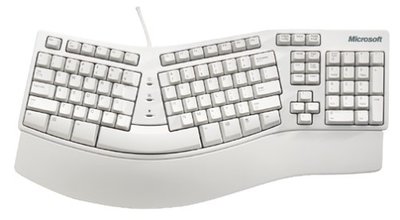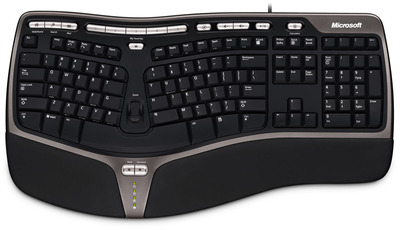When you’re typing as much as I do, sooner or later you realize that having a good keyboard is important. Years ago I was having issues with wrist-pain and switching keyboards was – for me – a very effective way of almost eliminating the problem.
But this is not about health issues directly. What I found is that the best way to stay healthy while working is to keep irritation to a minumum, and keyboards can do a lot of things that are just plainly annoying:
- Keys in wierd and/or hard to reach places
- Keys in half-size
- Keys that only work most of the time
- Keys that are much harder to press than the others
Looking at that list, there are two main things that can go wrong: keyboard layout and the key switch technology. I’m going to address both throughout this short series.
I’m going to present the main keyboards I’ve used in chronological order (that is; order that I used them), but I’m ignoring the very early stuff. Some were not that good (Commodore 64), some were horrible (Atari 400, I’m not even sure if I’d call that thing you’ve got a keyboard) and some were pretty nice (like the Amiga 500). My focus is on keyboards that are still available and useful to today’s PC or Mac user.
As an example of frustrating design, I present:
The MS Natural Elite

All in all it’s not a bad board; they’re cheap and they’re fairly pleasant to type on with light-weight keys, but all the navigation keys are in half-size AND in non-standard places (and yet close enough to the standard locations to get really confusing). Get used to pressing INSERT instead of END and fumbling for the cursor keys. Bad, ugly and unnessessary. Also, in my experience, they break after 3 years or so.
The MS Natural 4000
The successor to the Elite that solved most of the issues with the layout, but the modifier keys and especially the space bar were so heavy I found myself slamming my thumbs on them which can’t be good.
The extras, like the horrible multimedia “keys” and the vertical “joystick” or whatever that thing is, I won’t further address, since I never used them.

Also, it broke down after only a year. Not good at all for a keyboard that cost about 60 euros at the time.
By now I was getting frustrated by key switches, and I wanted something that would actually let me type in a consistent way and KNOW that I was really pressing a key when I thought I was, without me having to slam every one of them into the ground.
Which brings me to the next post: In search of a better keyboard; The IBM Model M.